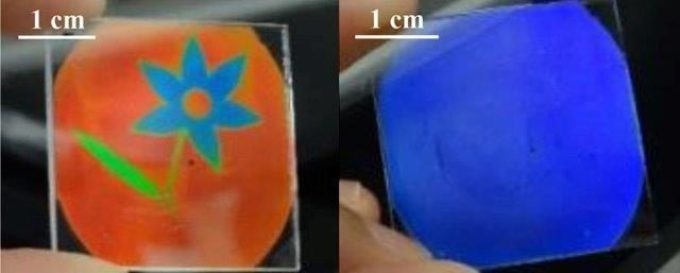Feb 8 2018
In nature, colors can aid as a form of communication, but they can also hide plants and animals, concealing them from sight. Researchers currently report in ACS Applied Materials & Interfaces that they have created polymers that can better imitate nature’s color-changing abilities than current polymers. They say the materials could enable camouflage textiles, smart decorations, and better anti-counterfeiting measures.
 Newly developed polymer can better mimic nature’s color-changing abilities. (Image credit: American Chemical Society)
Newly developed polymer can better mimic nature’s color-changing abilities. (Image credit: American Chemical Society)
A majority of colors that people are acquainted with, such as shades on a piece of paper, are made with pigments. But another type, called structural color, occurs when the color is fashioned by intermittently arranged microscopic structures that interfere with visible light. For instance, peacock tail feathers are brown, but arrangements present in the feathers make them appear green and blue to the naked eye. Researchers have used cholesteric liquid-crystalline (CLC) polymers to imitate the structural coloration found in nature and convert them into responsive materials. But thus far, researchers have only made them in a limited variety of colors. Therefore Albertus P. H. J. Schenning and Monali Moirangthem wanted to create CLC polymers with the full visible spectrum of colors.
The team employed inkjet printing technology and a calcium nitrate solution to print an image on a CLC polymer they created. Printing successive layers altered the degree of swelling of the CLC polymer, changing the color. One layer resulted in an orange color, a second layer altered it to green, and a third layer made it blue. As an example, the researchers used the process to draw a blue flower having green leaves on a reddish-orange background. Once the ink dried, the image was not visible anymore—the whole surface appeared blue. However, breathing on it or sprinkling water caused the full-color image to re-appear.
The researchers received funding from The Netherlands Foundation for Scientific Research.